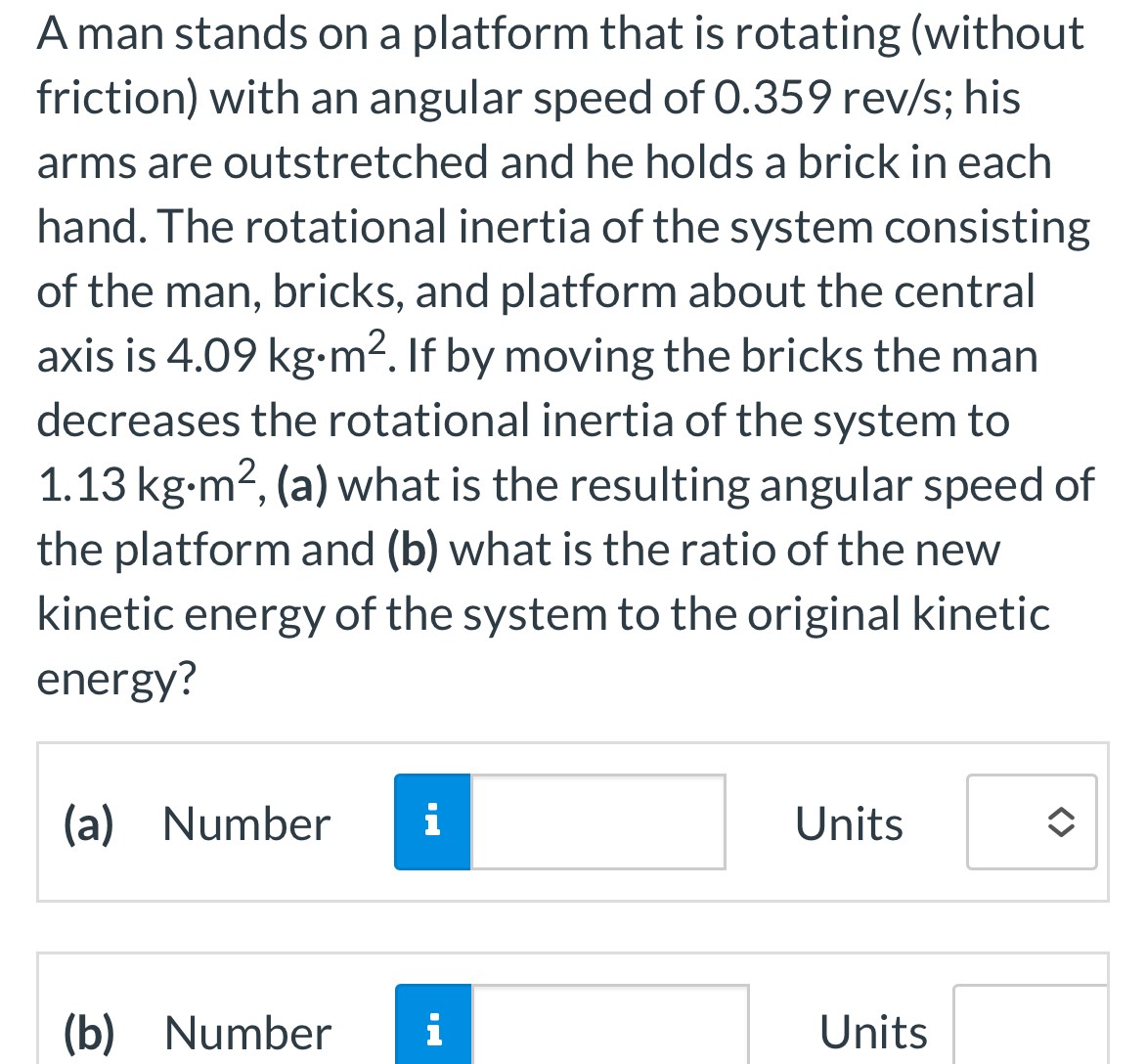A man stands on a platform that is rotating (without friction) with an angular speed of 0.359 rev/s; his arms are outstretched and he holds a brick in each hand. The rotational inertia of the system consisting of the man, bricks, and platform about the central axis is 4.09 kg⋅m2. If by moving the bricks the man decreases the rotational inertia of the system to 1.13 kg⋅m2, (a) what is the resulting angular speed of the platform and (b) what is the ratio of the new kinetic energy of the system to the original kinetic energy? (a) Number Units (b) Number Units
